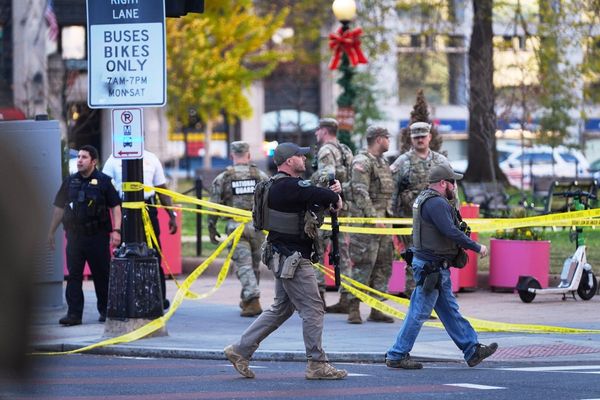
Richard Davis shot himself 192 times — literally shot himself, usually on camera, while demonstrating the modern-day concealed bulletproof vest he invented in the 1970s. It can be argued that no one in the history of humankind has ever shot himself that many times.
Why. Would. They.
As we see in Ramin Bahrani’s fascinating documentary “2nd Chance,” the narcissistic, self-aggrandizing, folksy, outwardly amiable, infuriatingly obstinate and complex Davis also shot himself a number of other times metaphorically. Bahrani (director of such films as “Man Push Cart” and “Chop Shop”) also serves as off-camera interviewer and narrator, and as he says at the outset of this tale, Davis repeatedly risked his own life with those shooting demonstrations as part of his endeavor to save thousands of people with his invention, but ultimately put over 100,000 lives at risk when he oversaw the creation and marketing of a later version of the vest that was tragically problematic.
Along the way, Davis turned himself into something of a folk hero, made millions of dollars, created hundreds of jobs and saw his invention become a staple with law enforcement and military personnel in a classic tale of the Great American Dream — which eventually turned into a nightmare.
Director Bahrini wisely avoids complicated time-shifting narratives, re-creations or flashy graphics, recognizing he has more than enough material in existing archival footage and snippets from the crude “Dirty Harry” knockoff movies Davis produced to market his product, as well as current-day interviews with a number of key players in this story. Front and center is Davis, who is forthcoming when he wants to be forthcoming, cagey when he wants to be cagey, and always paints himself as the downhome hero of his own story.
Davis was operating a couple of pizza parlors in Detroit in 1969 when he was held up by three gunmen during a delivery, used a .22 to defend himself but was wounded by shots to his leg and right temple. After one of his pizza shops was burned to the ground, Davis turned to a very different kind of business plan — the design, manufacture and marketing of a relatively lightweight bulletproof vest that could be worn beneath clothing. (Later in the film, we’re told that despite Davis’ repeated claims he had no insurance policy on the pizza joint, he had taken out a policy less than week before the fire. His dramatic origin story about the robbery is also called into question when no credible police report or news stories can be found about the incident.)
Driving from police station to police station to demonstrate his product, publishing a catalog called “Sex and Violence,” using bikini-clad models to help market the vest, and creating those aforementioned cheapo films, Davis turned the Second Chance Body Armor Co. into a multimillion-dollar American success story. As Davis recounts in his typical aw-shucks manner, “I told my wife we can go to K-Mart and buy anything we want. … [It was] redneck nirvana.”
Davis headquartered Second Chance in Central Lake, Michigan, becoming the town’s largest employer and a larger-than-life figure who staged elaborate annual fireworks shows and hosted weeklong shooting competitions on his expansive property. (When a canister explodes at a 1997 show, killing one person and injuring 15 others, Davis blames the manufacturer of the fireworks and complains, “Everybody is pointing at me, like it was my fault.”) Meanwhile, Davis keeps a running tally of the law enforcement personnel who credit his invention with saving their lives — literally hundreds of people.
After 9/11, with U.S. military and domestic law enforcement officers stocking up on vests, Davis and Second Chance sold a next-generation vest using zylon, a fiber that was lighter, thinner and supposedly stronger. But by 2002, it was clear that zylon degraded at a rapid rate, putting thousands of lives at risk.
In one of the most compelling sequences in the film, we hear from the widow of an Oceanside, California, police officer who was shot and killed despite wearing the zylon vest. Richard maintains the officer was killed by a shot that landed above the vest, but the official report shows two bullets had gone through the vest. Second Chance eventually paid a settlement in that case and a total of some $65 million in settlements, with Richard losing the company, declaring bankruptcy, suffering a heart attack and getting divorced.
Still, he continues to paint himself as hero and victim, even as the obvious metaphors about bulletproof vest fiber and moral fiber pile up. (In another wrinkle, Davis’ son, Matt, has found success with the Armor Express body armor manufacturing company.) There’s something irresistible about the story of the former pizza guy who invented the modern concealable bulletproof vest, and Richard Davis isn’t about to let the doubts about his origin story or some of the terrible missteps he made along the way get in the way of that tale.







